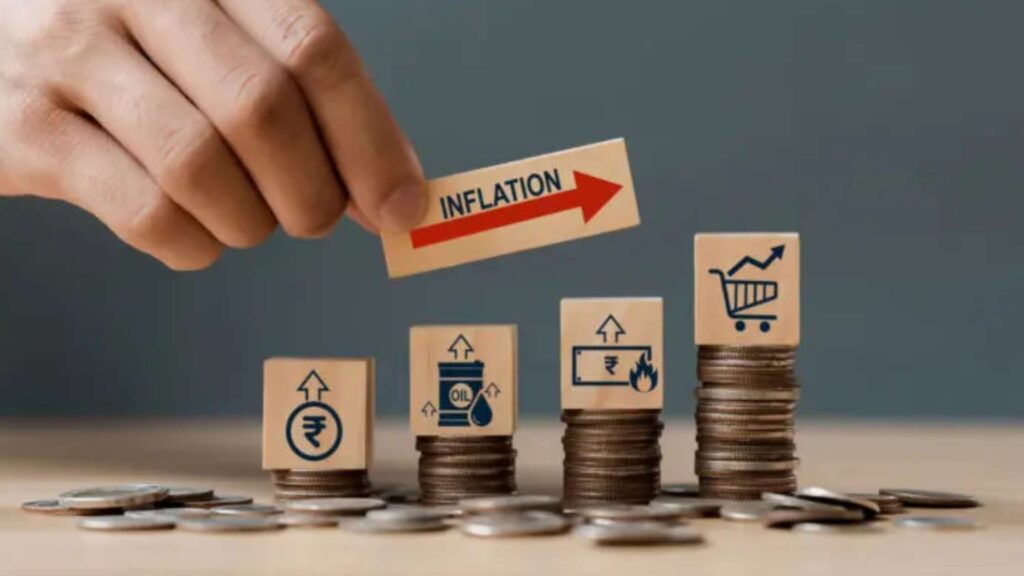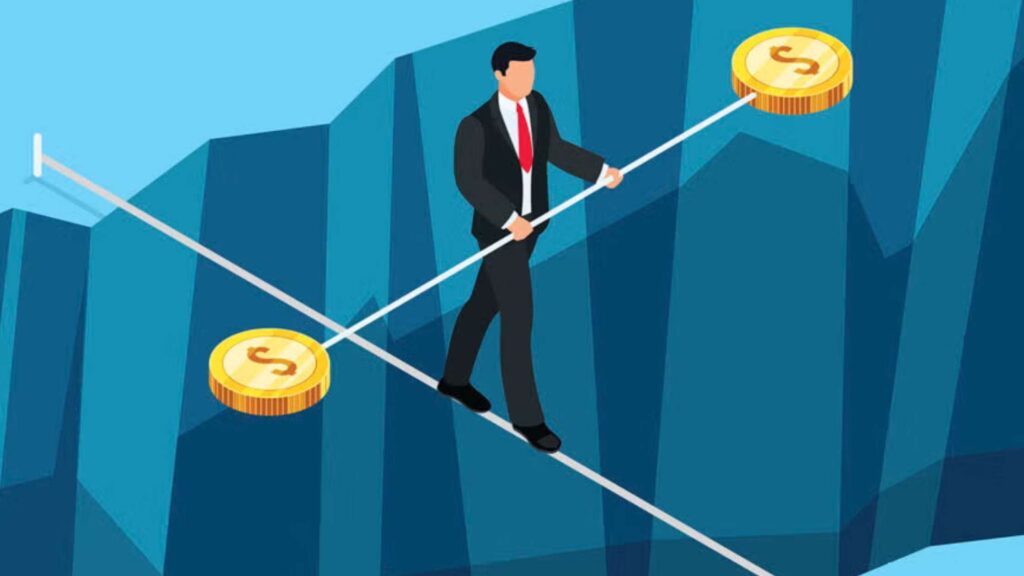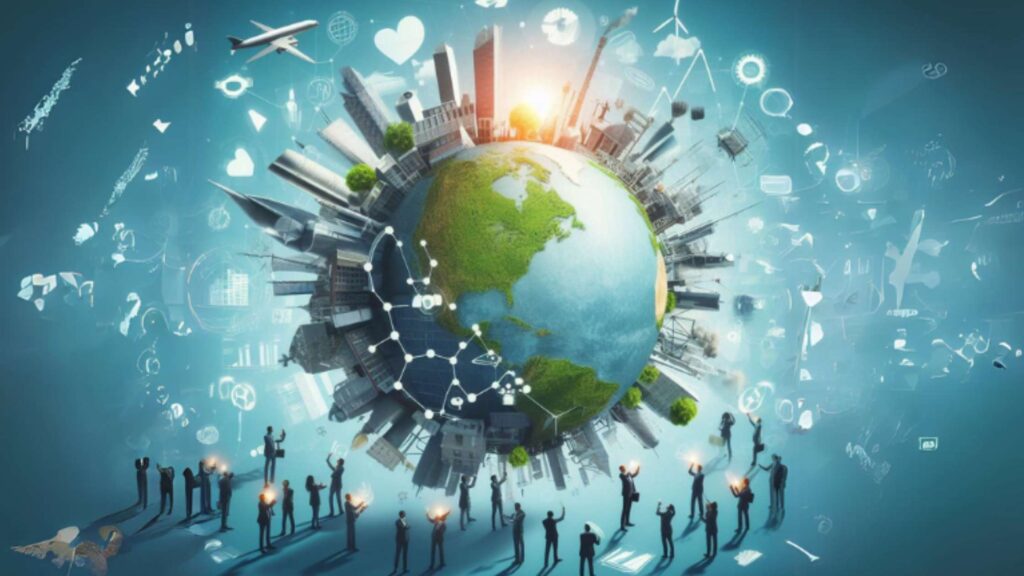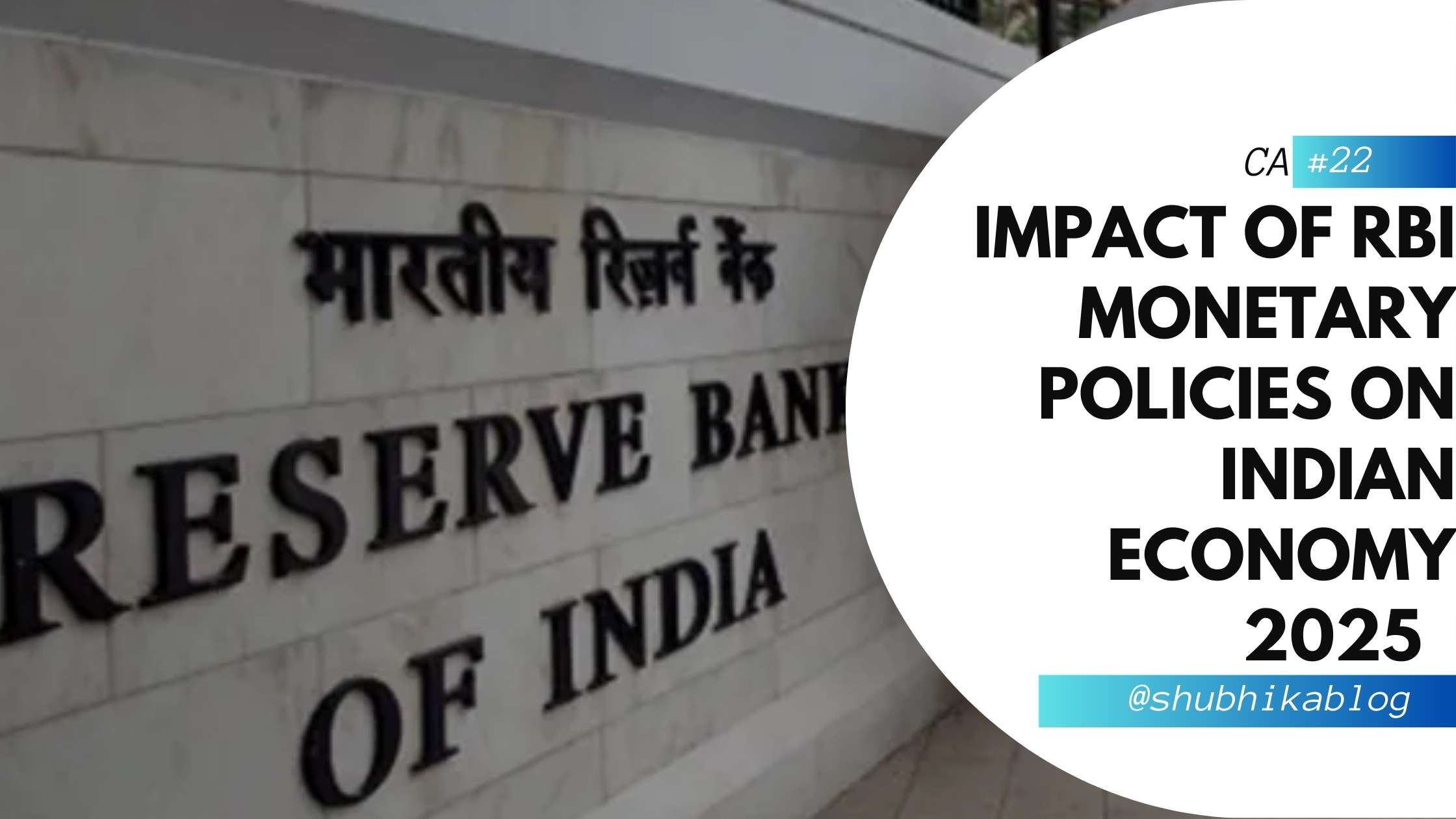The Reserve Bank of India (RBI) has introduced several new policies and measures aimed at stabilizing and boosting the Indian economy, particularly in response to global uncertainties and domestic challenges. Here’s an analysis of the impact of these policies on the economy:
Monetary Policy Easing and Inflation Control

The RBI has maintained a cautious approach to monetary policy, prioritizing inflation control while supporting growth. Inflation in India eased to 5.2% in December 2024, from 5.5% in November, with potential rate cuts in 2025 .
The central bank has signaled a possible reduction in interest rates, which would be the first since May 2020. This is expecting to stimulate borrowing, investment, and consumption, thereby supporting economic recovery .
The RBI’s focus on maintaining price stability has helped anchor inflation expectations, with headline inflation easing for two consecutive months. Although food inflation remains sticky and requires close monitoring .
Support for Financial Stability

The RBI has emphasized the importance of a stable financial system, with stress tests. They reveal that banks and non-banking financial companies (NBFCs) maintain capital levels well above regulatory minimums, even under adverse scenarios .
Asset quality in the banking sector has improved, with gross non-performing assets (NPAs) expected to rise only marginally to 3% by March 2026, reflecting robust recoveries and write-offs .
The RBI’s liquidity management measures, including variable rate repo auctions and bond purchases, have helped address liquidity gaps and stabilize financial markets .
Boosting Consumer and Business Confidence

High consumer and business confidence are expecting to drive economic recovery in 2025, supported by robust corporate balance sheets and profitability .
The RBI’s policies have contributed to a brighter investment scenario, with corporations stepping into 2025 with strong financial health, which is likely to spur private investment and consumption .
Addressing Global and Domestic Challenges

The RBI has acknowledged the challenges posed by global uncertainties, including geopolitical conflicts, financial market volatility, and climate risks. However, the Indian economy is expecting to pick up pace in the second half of 2024-25, driven by domestic drivers such as public consumption, investment, and strong service exports .
The central bank has also intensified reforms and surveillance to address vulnerabilities in the financial system, particularly in less regulated non-bank financial intermediaries .
Focus on Green Energy and Digital Transformation

The RBI has supported India’s green energy initiatives, with renewable energy capacity expected to cross significant milestones in 2025, including 100 GW of solar power and 50 GW of wind power .
Digital transformation in the banking sector has been a key focus, with increased adoption of artificial intelligence (AI) and other technologies to improve service efficiency and risk management .
Impact on Growth and Employment

Real GDP growth recover in the third and fourth quarters of 2024-25, supported by easy financial conditions and a revival in rural consumption .
Lower interest rates and expansionary monetary policies will boost job creation as businesses expand, contributing to overall economic growth .
FAQs
What are the key objectives of the RBI’s new policies?
The RBI aims to:
- Control inflation while supporting economic growth.
- Ensure financial stability in the banking and non-banking sectors.
- Boost consumer and business confidence.
- Address global and domestic economic challenges.
- Promote green energy initiatives and digital transformation in the financial sector.
How will the RBI’s monetary policy affect inflation?
The RBI has prioritized inflation control, with headline inflation easing to 5.2% in December 2024. The central bank may consider rate cuts in 2025 to further stabilize prices, provided inflation remains within the target range of 2-6%.
Will interest rates be reduced in 2025?
The RBI has signaled a potential reduction in interest rates in 2025, which would be the first cut since May 2020. Lower rates are expected to stimulate borrowing, investment, and consumption, thereby supporting economic growth.
How is the RBI ensuring financial stability?
The RBI has conducted stress tests, revealing that banks and NBFCs maintain capital levels above regulatory requirements. Asset quality has improved, with gross NPAs expected to rise only marginally to 3% by March 2026. Liquidity management measures, such as variable rate repo auctions, have also stabilized financial markets.
What is the impact of RBI policies on businesses and consumers?
Businesses are expected to benefit from lower borrowing costs and improved financial health, leading to increased investment. Consumers may see higher disposable income due to lower interest rates, boosting consumption and overall economic activity.
How is the RBI addressing global economic challenges?
The RBI is closely monitoring global uncertainties, such as geopolitical conflicts and financial market volatility. It has intensified reforms and surveillance to mitigate risks, particularly in less regulated sectors like non-bank financial intermediaries.
What role does the RBI play in promoting green energy?
The RBI supports India’s green energy goals, with renewable energy capacity expected to reach 100 GW of solar power and 50 GW of wind power by 2025. This aligns with global sustainability trends and reduces dependency on fossil fuels.
How is digital transformation being encouraged by the RBI?
The RBI is promoting the adoption of advanced technologies like artificial intelligence (AI) in the banking sector to improve service efficiency, risk management, and customer experience. This shift is expected to enhance financial inclusion and operational resilience.
What is the outlook for GDP growth in 2025?
Real GDP growth is projected to recover in the second half of 2024-25, driven by public consumption, investment, and strong service exports. Lower interest rates and improved financial conditions are expected to further support growth.
How will RBI policies impact employment?
Lower interest rates and expansionary monetary policies are likely to encourage business expansion, leading to job creation. Improved consumer and business confidence will also contribute to higher employment levels.
What are the risks to the RBI’s policy framework?
Key risks include:
- Persistent food inflation, which remains sticky.
- Global economic uncertainties, such as geopolitical tensions and financial market volatility.
- Climate risks and their impact on agriculture and infrastructure.
Where can I find more information on RBI policies?
For detailed insights, refer to the RBI’s Financial Stability Report, Monetary Policy Statements, and other publications available on the official RBI website (www.rbi.org.in).
Conclusion
The RBI’s new policies have been instrumental in maintaining financial stability, controlling inflation, and fostering economic recovery. While challenges remain, particularly in managing food inflation and global uncertainties, the central bank’s proactive measures have laid a strong foundation for sustained growth in 2025 and beyond. The focus on green energy, digital transformation, and financial inclusion further underscores the RBI’s commitment to a resilient and inclusive economy.












Leave a Reply